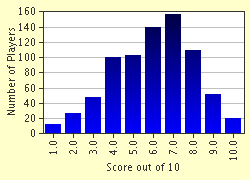Quiz Answer Key and Fun Facts
1. Everybody seems to agree that Edgar Allan Poe is the first to have published a detective story in the English language. Which story exactly was that?
2. European historians of literature, however, point out that in the Old World some stories had already been written in which the hero solves problems of detection with a combination of observation and logic. To which story in particular do they point?
3. Who was the French author who created a story in which the hero is a police-officer who stubbornly pursues 'his' criminal. However, when he ultimately has managed to lay hands on him, he lets him go and ... jumps into the Seine. Who is that author?
4. What was, in British English literature, the first 'detective story'?
5. Some of Dostoyevsky's novels can be viewed as (among other things) good detective stories, especially 'Crime and Punishment' in which one of the characters acts as an amateur psychologist in trying to force Raskolnikov to admit his crime. Who is that character with a special interest in the murderer's motivations?
6. One of the great promoters of the detective-story was undoubtedly Arthur Conan Doyle. He even got tired of his own success and wanted to kill off his hero, Sherlock Holmes. Later, however, Holmes made his re-appearance. Who was Holmes' secretive arch enemy who is mentioned in the story of 'The Final Problem' as apparently having eliminated Holmes (though not without getting killed himself in the act)?
7. G.K. Chesterton also tried his hand at creating a good sleuth. What was the unusual choice he made for that role?
8. The detective story got popular in unexpected circles. Even an English Monsignor (Ronald Knox) started to write detective stories and also compiled an excellent anthology of the 'Best Detective Stories of 1928-9'. It was especially the participation of women authors such as Agatha Christie that was remarkable. Which of these 'sleuths' appeared in her first detective novel, 'The Mysterious Affair at Styles', in 1920?
9. There were more successful women detective story-writers than just A. Christie. Which of the next four is the only one who did not belong to the so-called 'Big Four'?
10. Some detective stories were made into very successful films; e.g. Dashiell Hammett's 'Maltese Falcon' (of course, with Humphrey Bogart). A very big television success was 'Inspector Morse'. Who was his creator?
Source: Author
flem-ish
This quiz was reviewed by FunTrivia editor
looney_tunes before going online.
Any errors found in FunTrivia content are routinely corrected through our feedback system.

